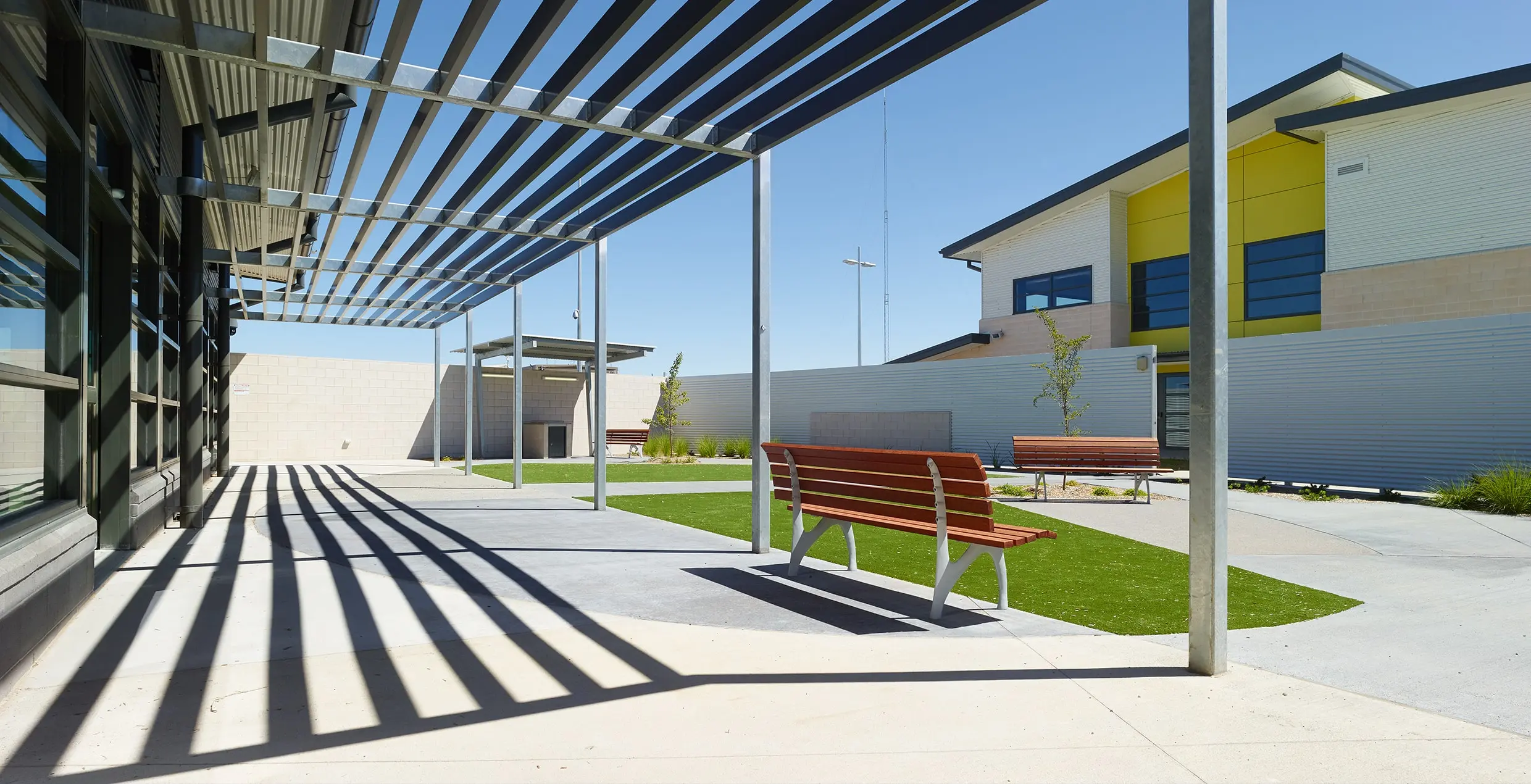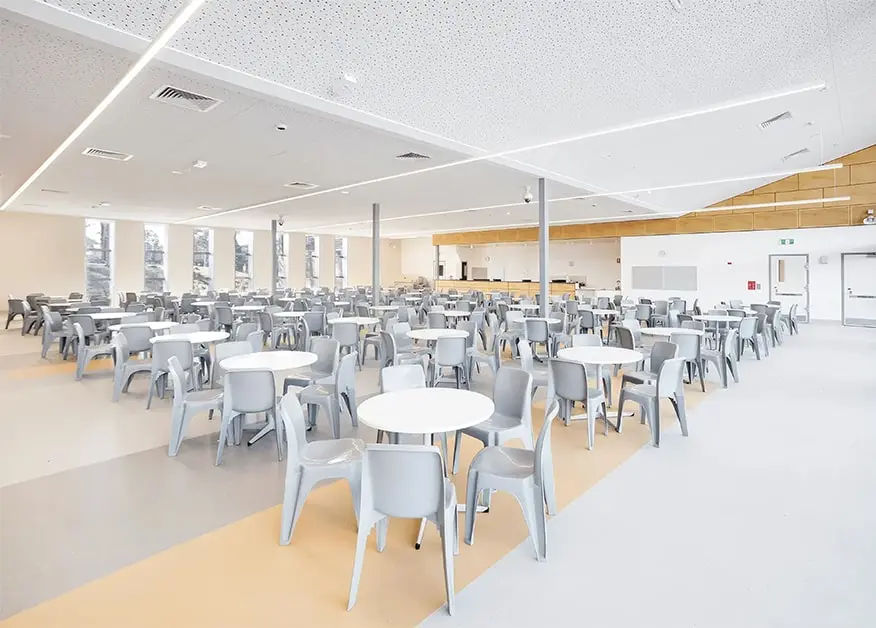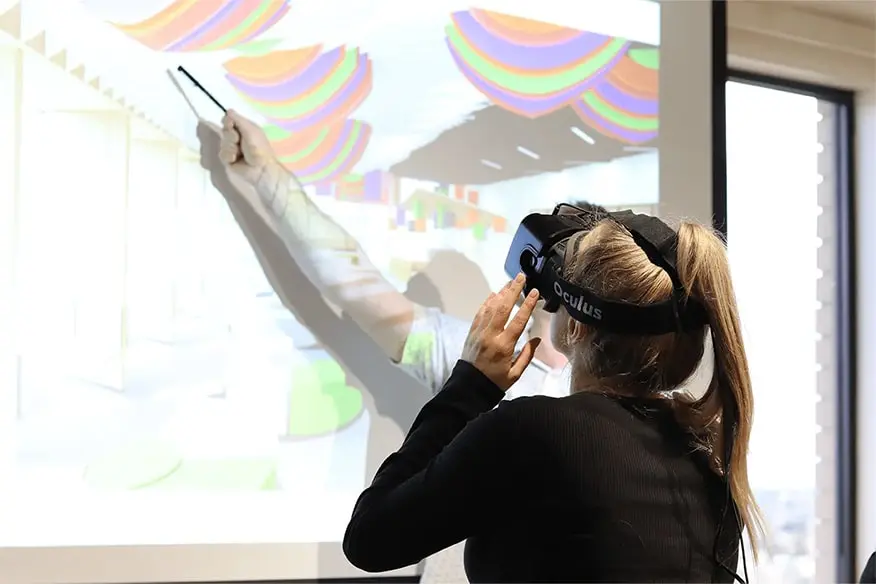
Visualisation in correctional architecture can sometimes be overlooked, after all, what purposes do pretty pictures have in building prisons? However, visualisation serves a pivotal and surprisingly wide-ranging function when it comes to creating correctional facilities.
Below I have outlined four, sometimes unexpected, ways visualisation helps us design, co-ordinate, and build better correctional facilities.
1. Conceptual Visualisation
Up until recently (historically speaking), architectural visualisations were created by pen and pencil, inked out by specialists commissioned by architects, to understand how their work would fit into the real world. With the advent of the computer and digital modelling, visualisation has become increasingly accessible to architects. Smart designers and firms quickly understood the value of fast and dirty, early stage renders to showcase form, materials, and context. On the back of efficient and high-quality 3D modelling, Guymer Bailey creates still images, walkthroughs, and virtual tours to aid in the design process.
In correctional architecture, concept visualisations in the early stages of a project allow us to accurately understand our architecture in the way physical models did in previous eras. How does the sun impact our most sensitive spaces? How do adjacent buildings affect sightlines and sun shading? In what ways do materials affect the feel of our mental health facilities?
In the early stages of a correctional project, Guymer Bailey focuses on accurately modelling our architectural, interior, and landscape concepts in 3D. Because of this rigor, it allows us to more comprehensively, and quickly, explore our project in a rendered environment, giving us better, real time, feedback.
Render accuracy is extremely important, particularly in the early design phases, since detailed and well-executed visuals can denote issues and allow designers, engineers, and builders to anticipate potential complications that would otherwise require project compromises. A quality render can become a tool to getting the desired result at completion.
– Hana Abdel “Renders vs. Reality, Projects From Renowned Architects: Before and After”

2. Visual Coordination
Pretty visualisations have their place, but on a day-to-day basis we need to understand how our building works, and so does our consultant team. Correctional architecture presents a myriad of technical and construction challenges that differ from other architectural typologies.
Services co-ordination, security integration, construction methodology, structural efficiency, just to name a few, are all far more critical to get right in the early stages of the project. Employing visualisation for things like clash detection with services, understanding security sight lines, and staff/inmate experience, can help us find issues sooner and communicate solutions more easily.


3. Staff and Visitor Experience
Up until now, we have discussed how visualisation can help the architect and the greater consultant team, but there’s a crucial group we are missing, and that’s the operators and users of our correctional facilities. Staff, visitors, and key stakeholders are an important forethought in prison design, so how can visualisation help these groups?
“By virtually prototyping a space, facilities operators can get a good sense of how the facility will be like to walk through and to engage with.”
– Gohta Shiraishi, Senior Interior Designer, Guymer Bailey
Systems such as VR, virtual tours, and 360-degree panoramas, allow groups such as emergency response teams, security officers, health workers, and administration staff to accurately understand the spaces they will be occupying before it exists. Riot control teams can understand and practice entering spaces and executing manoeuvres in virtual reality. Security officers can understand sightlines from officer posts and dayrooms. Admin staff can appreciate the visitor process and navigation more easily.

4. Building Excitement
Prisons aren’t just for prisoners, there are also a huge amount of people invested in the quality outcome of a correctional project. As great as the pragmatic uses of visualisation are, having beautiful images and videos of correctional projects generates excitement. This allows the public and stakeholders to understand where their money is going, displaying the new facility to potential staff, and showing the onsite construction team what they are working towards, which is something that is frequently overlooked.
By Mitchell McDonald Roberts
UP NEXT






























